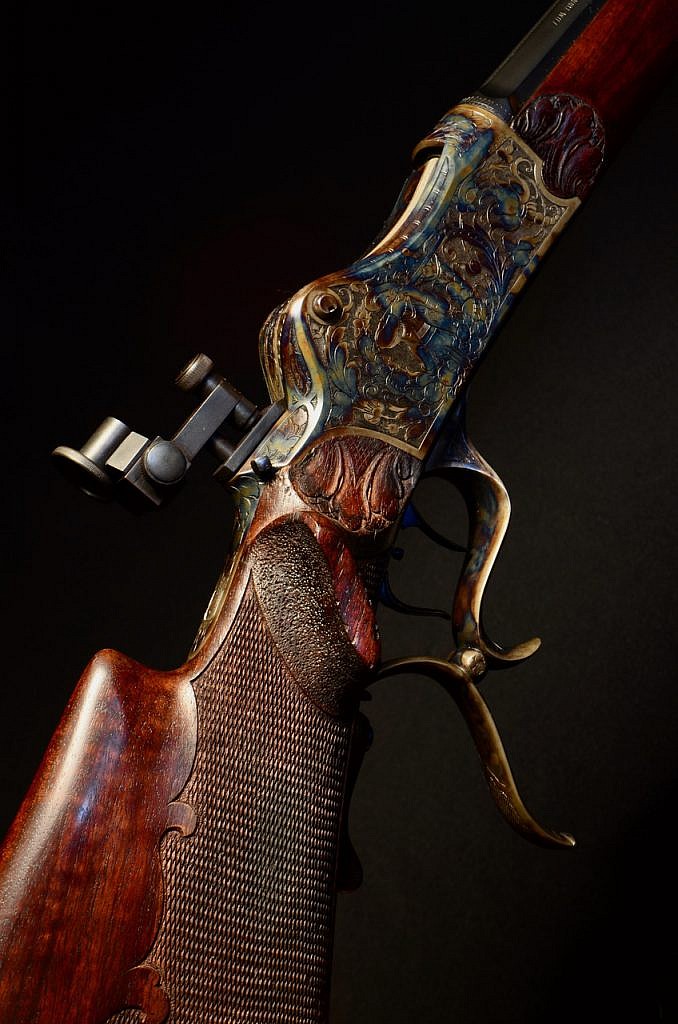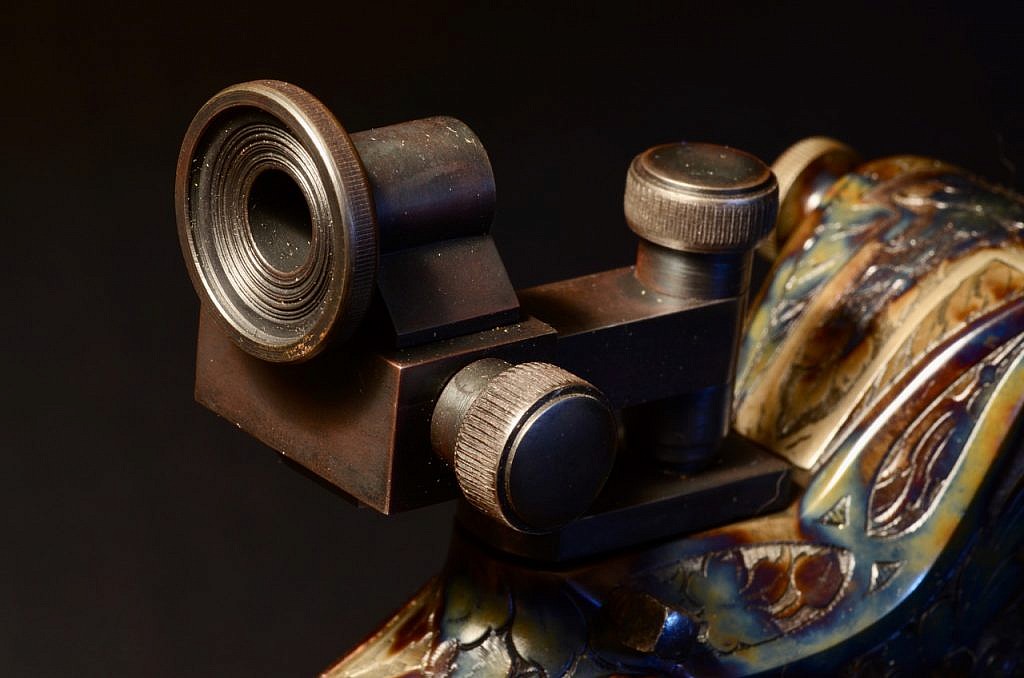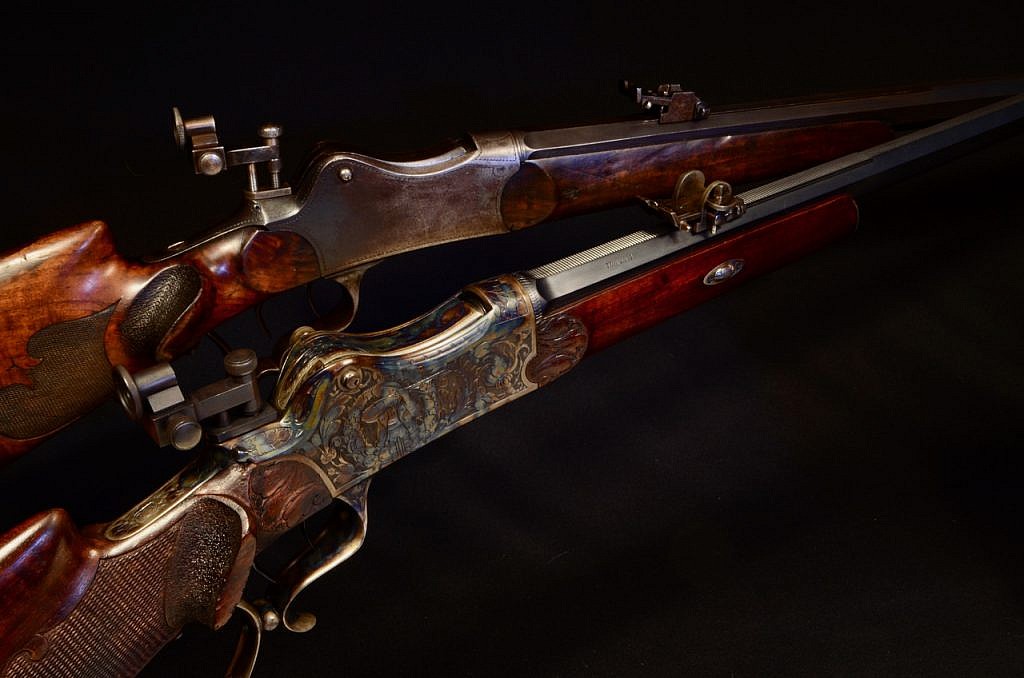
by Terry Wieland
In Sporting Note #16 (Falling in Love…Again, April 18) I wrote about a German Schützen rifle, dating from the 1880s, that I bought on a whim. In the same sale, I bought its running mate, a much newer rifle (circa 1912). It was also built on a Martini action, was more ornate, and had been almost fully restored, but was lacking one essential feature: It had no sights whatever.
Normally, Schützens are designed to be fitted with three sights — in American parlance, front, barrel, and tang. The front sight is usually on a ramp, and adjustable in several ways; the tang sight is not really a sight at all, but a diopter whose reticle sharpens the image of the barrel sight. The barrel sight fits on a dovetail milled along the top of the barrel and can be moved back and forth to suit the shooter’s eyes.
One major difference from American sights is that German ones were intended to be detachable. They were intricate and delicate, and were carried in a fitted case, to protect them. This is the reason so many German rifles in America are missing their sights: Either they didn’t have them when they arrived, or they were taken off and lost in the years since.
Because there is such a variety of designs, and because most were made by hand, by a craftsman in a shop with his own idiosyncratic ideas, there is little standardization. This means the chances of finding sights that will fit your rifle are very slim indeed.

My older rifle did have a front sight and diopter. From collector Bill Loos (one of the authors of the three-volume, 1,200-page history of Schützen in Germany, Alte Scheibenwaffen) I managed to obtain a mid-barrel sight of the right vintage that fit its dovetail. Bill found me a newer one to fit the dovetail on the newer rifle, and also a suitable front sight. Generally speaking, because the dovetails were made to several standard widths, suitable mid-barrel sights are the easiest to find. It’s then a matter of getting the right vintage, since designs changed over the years.
That left the diopter, which is always the most difficult, because almost no two are alike. I took the problem to Lee Shaver, the single-shot rifle specialist in Lamar, Missouri. Lee looked at the two rifles and the existing diopter and said, “I can use that one as a pattern and make you one for the other rifle. Will that do?”
Since Lee produces a line of receiver sights for American Schützens, patterned on the Soule, he’s right at home with the intricacies of sight-making. The only question in my mind was, how much? The estimate was $500, which was about what he charges for one of his deluxe sights for a Ballard or Stevens. How could he do it?

“I’ll make a pattern and program it into the CNC machine,” he told me. As it turned out, Lee was away for much of the next month and turned the project over to his conventional machining specialist, Ron Roehrs, who did it pretty much by hand. It took about 20 hours, and would have cost far more than Lee’s estimate based on hourly rates, but Lee figured a deal’s a deal.
As you can see, the new sight is practically indistinguishable from the old one. It’s not as stunningly elaborate as some diopter sights, which grew increasingly complex up until 1914. However, it looks suitable, works well, and the rifle seems comfortable with it. Unlike American tang sights, German diopters do not require fine Vernier adjustments. The procedure is to align the front and barrel sights, and only then to install the diopter and line it up with the others. It’s not a sighting device but an optical aid, and some German and Swiss matches do not even allow the use of diopters.
As with just about everything else to do with German Schützen rifles, it ain’t done the way we do it, but that only adds to the charm. They are nothing if not fascinating.
______________________________________________________________________________
Wieland took a year of machine shop in grade 10, and learned the valuable lesson that he is not a machinist. He still regards skill with a file as something akin to sorcery, and CNC is up there with the moon launch. Hence the awe.
